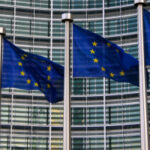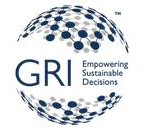
This week at the COP24 climate summit in Katowice, Poland, the discussion about how to implement the directives of the Paris Agreement is in full swing. With the recent warnings of the IPCC in mind, (almost) all world leaders have come to the conclusion that the transition to a low-carbon, resource-efficient circular economy is indispensable for meeting the long-term economic, social and environmental sustainability objectives set out at COP21 and in the Sustainable Development Goals (SDGs).
To support these goals, the World Economic Forum estimates that $5 trillion in “business-as-usual investments” would need to be directed towards sustainable investments globally. In the EU alone, an additional investment of $200 billion is required every year to meet climate and energy targets by 2030. A substantial part of this capital will have to come from the private sector.
One of the central questions is how to provide investors the information they need to make informed decisions on investments that meet sustainability objectives while achieving stronger risk adjusted returns. Despite a dramatic increase in environmental, social and governance (ESG)-specific reporting, the World Business Forum for Sustainable Development (WBCSD) has found that many investors still struggle to assess a company’s sustainability performance and related risks beyond the scope of backward-looking financial data.
According to the Chartered Financial Analyst (CFA) Institute, the main barriers to ESG-informed investing are a lack of appropriate quantitative information, a lack of comparability across firms, and a lack of data quality and assurance. A survey by State Street among 582 institutional investors shows that 60 percent of respondents are missing common standards for measuring ESG performance, while 53 percent quoted a lack of relevant ESG-performance data reported by companies. In a similar survey among 750 retail investors, these numbers were 39 percent and 48 percent, respectively.
EU-policy offensive
In view of this situation, the European Commission’s Directorate-General for Financial Stability, Financial Services and Capital Markets Union (FISMA) invited 400 key stakeholders to a high-level conference on November 30 to discuss “the future of corporate reporting in a digital & sustainable economy.” Following a public consultation with 338 responses from earlier this year, the conference was an additional opportunity for regulators, preparers, users, civil society organizations and academia to provide input on this topic. The event stands in the context of the European Commission’s 2018-2019 “Sustainable Finance Action Plan” and is part of a “fitness-check” currently under way to “assess whether the EU’s legislative framework for corporate reporting is still fit for purpose and for new challenges and where it needs to be adapted to better serve the capital markets and the EU economy.” This also implies scrutiny of the European Non-Financial Reporting Directive (2014/95/EU) and the planned European Single Electronic Format for annual financial reports. Insights will be published in mid-2019.
Another multi-stakeholder initiative launched by the Action Plan is the European Corporate Reporting Lab hosted by the European Financial Reporting Advisory Group(European Lab@EFRAG), which brings together representatives from business, investors and the accountancy profession. The mission of “The Lab” is to identify and share good ideas and best practices in order to stimulate innovations in the field of corporate reporting in support of the EU’s sustainable finance ambitions. The Lab convened for the first time on 27 November 2018 and will initially focus on non-financial reporting and topics such as environmental accounting and the integration of forward-looking information as recommended by the Task Force on Climate-Related Financial Disclosures (TCFD).
In a resolution on sustainable finance from 29 May 2018, the European Parliamentfollowed up the Commission’s Action Plan by expressing the need for “reliable, comparable and harmonised disclosure of information by investee companies.” The parliament noted an “insufficient degree of convergence in ESG reporting within the framework of the Non-Financial Disclosure Directive” and thus called for harmonization “with the aim of fostering more consistency, and for defining the most appropriate ESG metrics for disclosure, using sustainability and resource-efficiency indicators and incorporate them into integrated reporting.”
Striving for comparability
The advance made by EU policy makers has prompted many stakeholder groups to step forward and argue for standardizing ESG-related metrics and the alignment of non-financial reporting frameworks in order to facilitate better informed investment decisions.
In the US, an alliance of major investors and associated interest groups representing more than $5 trillion in assets under management, including CalPERS and the UN Principles for Responsible Investment (PRI), submitted a petition to the Securities and Exchange Commission (SEC) in October, asking to “develop a comprehensive framework” to mandate public companies to provide relevant, auditable and decision-useful ESG information to investors. The petition complains that listed companies in the US keep “using different reporting frameworks and multiple mechanisms to disclose sustainability information” due to the lack of an authoritative standard. “Thus, investors are still dissatisfied with the comparability of sustainability information, even between companies in the same industry.”
In response to increasing stakeholder demand, last month the Corporate Reporting Dialogue (CRD) launched the “Better Alignment Project,” a two-year mission to “better align the frameworks in the ESG reporting space (SASB, GRI, CDP) and frameworks that promote further integration between non-financial and financial reporting (IIRC, CDSB).” The Dialogue also includes the Financial Accounting Standards Board (FASB), the International Financial Reporting Standards (IFRS) and the International Organization for Standardization (ISO). Convening for the first time in November 2018, the different peers work together to refine overlapping indicators and align them across their reporting frameworks. According to the CRD, all of the different standards and frameworks “are individually important with distinct aims, fulfilling information needs of various audiences and therefore serve different, important purposes.” Hence, the “aim of this project is to drive better alignment, but not one framework.”
In support of the CRD’s alignment approach is the newly established Global Investors Organisations Committee (GIOC) constituted by Ceres, the CFA Institute, the Global Impact Investing Network (GIIN), the Global Sustainable Investment Alliance(representing national SIFs), the ICGN, the UN PRI and the UN Environment Programme Finance Initiative. The aim of this interest group is to provide a more unified view on corporate ESG reporting from an investors’ perspective and guidance for the future development of corporate reporting.
In its 2018 “Investor Agenda for Corporate ESG Reporting,” the GIOC advocates the disclosure of “standardised ESG information at a basic level to complement more customised ESG reporting,” seeing it as being “incumbent on the standard-setting organizations to present a coherent vision of how these standards can and should fit together.” Acknowledging that “there is no single solution — one set of metrics or a single framework — that will satisfy all users of ESG data,” the GIOC supports better coordination of existing non-financial reporting frameworks rather than creating new ones: “From companies’ perspective, ESG issues are endogenous and difficult to standardise” due to the heterogeneity of ESG data users — investors, stakeholders and companies. In spite of these challenges, the GIOC believes “that companies should seek to identify and publish material ESG issues and relevant KPIs as part of their annual reports. Integrated reporting may provide a good framework for this.”
The investors’ need for common metrics across different reporting frameworks is corroborated in a study by WBCSD and PwC: “To enhance comparability, investors want consensus among standard setters, data aggregators and investor representatives on a global framework and standards for non-financial information. In the absence of such standards, investors are looking for a company-led solution that would reflect transparency in methods used, consistent application and comparability within industry sectors.”
The position of the CDSB, outlined in a 2018 report together with ACCA, is to first agree on an “independent, standardised set of components, terms, definitions and characteristics that will form the architecture for understanding and describing the sustainability reporting landscape” before replacing those “discussions and activities within a known, transparent framework.” The report does not determine which known framework this would be: “Is it US GAAP supported by the new SASB standards? Is it GRI 6? Is it <IR 3> or is it some stakeholder-determined amalgam of all these (and others)?”
A Green Paper published by the University of Oxford’s Saïd Business School suggests the mandatory disclosure of standardized ESG metrics “of equal quality and comparability” but also stays neutral on the choice of frameworks, arguing that “frameworks are organising formats for disclosing particular types of information, but which remain agnostic on standards.” The paper, edited by Richard Barker and Robert G. Eccles, serves as background reading for a debate among stakeholders at the Oxford Union on December 11 on the question of whether or not the FASB and the International Accounting Standards Board (IASB) should be in charge of setting standards for non-financial information.
Last but not least: Regarding convergence, the most outspoken proponent of a single corporate reporting framework is Accountancy Europe, an association of nearly 1 million professional accountants, advisors and auditors. In their view, expressed in a call-to-action letter from 2017, the different standard-setting bodies and initiatives should first streamline existing frameworks with the support from regulators before aiming at “developing a single global framework for non-financial information reporting. In the longer run, one party should take firm ownership of the development of this much-needed framework.”
Despite the common understanding that the comparability of data is a prerequisite for benchmarking ESG-related risk and performance, there remains doubt whether non-financial metrics can be standardized and integrated into corporate reporting. This is mainly due to their often-intangible properties, but also because material ESG information is usually stakeholder-, industry- and location-specific. Moreover, ESG-related performance typically extends beyond clearly defined boundaries due to complex supply chains or because of Scope 2 and Scope 3 considerations in regards to CO2 emissions. As to the establishment of a single global ESG-disclosure framework, the Oxford Green Paper suspects a certain reluctance from established providers, as each framework “has its own particular mission, key set of stakeholders (which often overlaps with those of its ‘competitor’ peers), location and, perhaps most importantly, its own set of funders.”
A new quality of corporate reporting
As Europe surges ahead with a “Fitness Check” of legislative frameworks for corporate reporting, investors, regulators and other finance-oriented interest groups are stepping up the debate on how to achieve better comparability of ESG-related risk and performance through standardization of non-financial metrics and disclosure provisions. Questions range from how to measure intangibles via integrating forward-looking information to how to converge different reporting frameworks and the role and responsibilities of existing standard-setters, to name only a few.
No matter the outcome of the debate, growing end-user demand, supported by new technologies, market dynamics and regulatory initiatives lead by the EU will bring about significant changes in the field of corporate reporting. For issuers, this opens up an opportunity to add value to corporate disclosure, providing investors the means to make ESG-informed decisions that will help finance the much-needed transition into a low-carbon, resource-efficient, circular economy, while providing positive returns.
Even though ESG risk and performance measurement is still in its infancy, this new quality of corporate reporting is likely to be more about value and less about volume, more about comparability and less about diversity, less about box-ticking and more about dialogue.
Michael Laermann, Sustainability and Communications Consultant
This article was first published on December 4, 2018 by Sustainable Brands Magazine.



